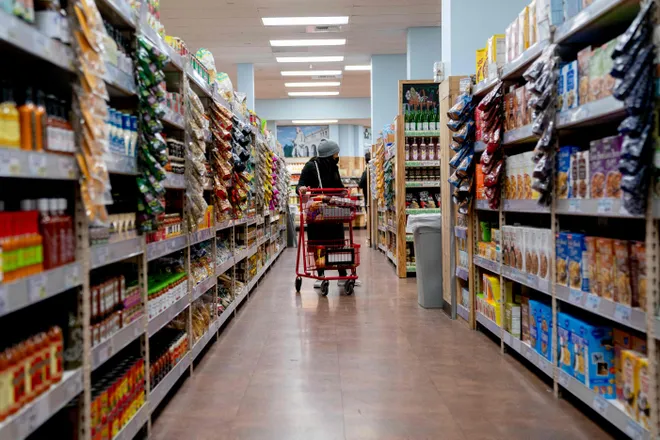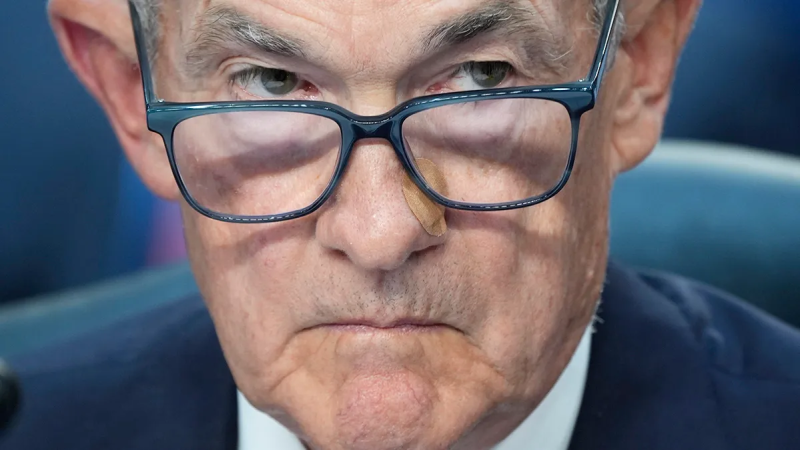Inflation eases to three-year low in August. How will it affect Fed rate cuts?
Inflation slowed to a more than three-year low in August as falling gasoline and used car prices offset further gains in the cost of services such as rent, car insurance and airline fares.
The report likely bolsters the Federal Reserve’s plans to start lowering interest rates next week, but some economists noted the rise in service costs pushed up an underlying price gauge and could help solidify a modest quarter-point cut.
"Overall, inflation appears to have been successfully tamed but, with housing inflation still refusing to moderate as quickly as hoped, it hasn’t been completely vanquished," Paul Ashworth of Capital Economics wrote in a note to clients. "Under those circumstances, we expect the Fed to take a measured approach to cutting interest rates."
Prices broadly rose 2.5% from a year ago, down from 2.9% in July, according to the Labor Department’s consumer price index, a gauge of goods and services costs across the U.S. That’s the smallest increase since January 2021 and the fifth straight pullback. On a monthly basis, costs crept up 0.2%, in line with the prior month.
What is the US core inflation rate today?
Core prices, which strip out volatile food and energy items and are watched more closely by the Fed, increased 0.3% after rising 0.2% in July. That kept yearly core inflation at 3.2%.
Protect your assets: Best high-yield savings accounts of 2023

Is inflation falling?
After accelerating early this year, inflation has ebbed since March as pandemic-related supply snarls have resolved, pushing down the price of goods such as used cars and furniture.
The cost of services − including rent, dining out and health care − have marched higher but are starting to do so at a slower pace as COVID-19-induced labor shortages fade and wage growth slows.
Inflation climbed to a 40-year high of 9.1% in mid-2022, prompting the Fed to raise interest rates sharply.
How much could the Fed cut rates in September?
Federal Reserve Chair Jerome Powell signaled last month that the central bank will almost certainly start lowering its key interest rate next week now that inflation is easing.
Most economists and futures markets expect a typical quarter-point cut. But speculation about a half-point decrease gained steam after a second straight disappointing employment report this month showed employers added just 142,000 positions in August, below the 163,000 expected.
But additional worrisome job numbers will probably be needed to trigger a larger rate cut in coming months.
Nationwide economist Ben Ayers said the pickup in core inflation last month "highlights the sticky nature of the recent inflation surge" and "should clinch a smaller" rate cut. "Fed officials remain wary to feed any lingering price momentum for the economy," he wrote in a research note.
Futures markets anticipate a half-point rate cut in both November and December, assuming the job market keeps cooling and inflation continues to retreat.
From March 2022 to July 2023, the Fed raised its benchmark short-term rate from near zero to a 23-year high of 5% to 5.25% to tame inflation.

Why is the price of gasoline decreasing?
Gasoline prices fell 0.6% in August and have fallen or flatlined for four straight months as slowing economic growth in the U.S. and overseas dampens crude oil sales. Regular unleaded averaged $3.26 a gallon Tuesday, down from $3.45 last month and $3.83 a year ago.
Are rents falling?
Rent increased 0.4% in August after rising 0.5% the previous month. That pushed down the annual increase from 5.1% to 5%, lowest since April 2021. Economists have been looking for rent increases for existing tenants to moderate, based on new leases, and that’s finally starting to happen a bit more rapidly.
Housing costs broadly have been the biggest factor driving inflation and accounted for 36% of the rise in prices last month.
Some other services costs also climbed higher. Auto insurance rates increased 0.6% and are up 16.5% the past year. Car repair costs also rose 0.6%. And airline fares jumped 3.9% after dropping in recent months and hotel rates leaped 1.8%.
Goods prices generally continued to drift lower. Used car prices fell 1% while new cars were flat, and furniture dropped 1%, the latest in a flurry of declines. But apparel prices rose 0.3%.
Will food prices continue to rise?
Grocery prices were flat and have held steady or dipped for months. They rose just 0.9% annually.
Last month, bacon prices slid 1.7% while bread dipped 0.1%, its second straight decline. But egg prices shot up 4.8%, the latest development in a price surge sparked by a bird flu outbreak. Uncooked ground beef increased 1.1% and chicken rose 0.7%.
Restaurant prices, though, have continued to climb because of wage pressures and increased 0.3%.
Disclaimer: The copyright of this article belongs to the original author. Reposting this article is solely for the purpose of information dissemination and does not constitute any investment advice. If there is any infringement, please contact us immediately. We will make corrections or deletions as necessary. Thank you.







